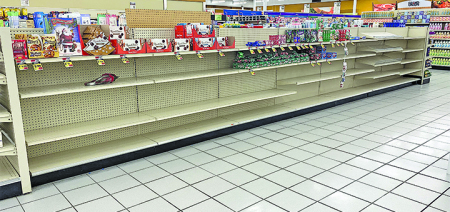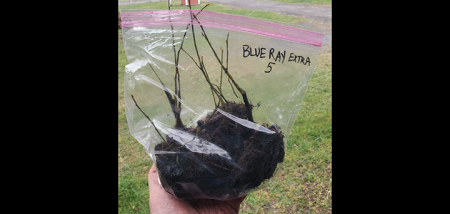Tilting At Windmills: The Man Who Put The Sun In A Snow Globe
Published:
April 7th, 2023
By:
Shelly Reuben

Although the President of the Universe tended to concentrate on his own personal areas of expertise, such as creating a new season (autumn) or a new variety of plant-life (dogwood trees), he occasionally wandered off course and interested himself in the dreams and ambitions of comparatively unimportant human beings.
Like Larry Pepper.
Larry was an incredibly likeable man, although often – too often if you asked his girlfriend, Sally Dadigan – those listening to one of his schemes would raise an eyebrow and assume a skeptical “Would you listen to this guy?” expression on their faces, which Sally found condescending and insulting.
Larry had ideas. He had so many ideas. And all of them had value, if only in the meritocracy of imagination.
He had invented a fountain pen that removed ink from handwritten documents, an umbrella that the wind could not turn inside out, a candle that recycles its own wax, and something he called “Luggage Jewelry” to affix to suitcases so that you could tell yours from a lookalike bag belonging to someone else.
The prototypes of most of his inventions cost more to produce than they ever made in sales, but Larry earned enough money at his day job – he was the creative director of a firm that made snow globes, ships in bottles, crystal tabletop Christmas trees, and other high end decorative items – to subsidize his expeditions into “The Land of I Have an Idea.”
Sally Dadigan loved all her boyfriend’s brainchildren. Even the one about them getting married after she had been cast in an ON or OFF Broadway show. Larry was short, dark (skin, hair, and eyes), and as easy-going as a grandpa sipping tea in front of a fireplace, even though he was only 26 years old.
Sally was tall and pretty, with long, chorus girl legs, a peaches and cream complexion, a quick temper, and blue eyes that sent off firecrackers of light when something or someone raised her ire.
At around the time Sally Dadigan was preparing to audition for the part of Marian the Librarian in a revival of the musical comedy “The Music Man,” Larry got an idea that, other than being magical, seemed surprisingly practical, in that almost all of the components he would need to execute it were readily available at the company where he worked...the one that made snow globes.
Larry’s idea was this:
He would invent or discover a material that would glow of its own accord. Perpetually. The light would be self-generating, and would neither require nor use power transmitted externally from any other source.
Its substance could be compressed into a sphere about the size of a ball bearing, and it would rise in the morning and set at night in imitation of the sun. It would do so picturesquely inside a snow globe (one without snow) containing a little red farmhouse set in a miniature landscape of verdant green grass, with a sugar maple flaring behind the roofline, a beech tree to the left of the house, and a quaking aspen off to its right.
As the sun rose and fell within the snow globe (renamed “day globe” by Larry), it would change color from egg shell white, to daffodil yellow, to carrot orange.
Moving behind and above the trees as it arched across its miniature sky, it would cast shadows on the lawn, creating vivid patterns of light and dark; it would shine like flames of fire against the farmhouse windows; it would back-light leaves so they looked as translucent as dragonfly wings. And before night, the itty-bitty sun would set within the globe in a wild and dazzling extravagance of color.
Larry Pepper had all the variables needed to manufacture these globes: miniature farmhouses, trees, lawns (including miniscule patches of wildflowers), wee puddles (made of glass), and even tiny mailboxes for outside the front doors. He had the fans, magnets, and batteries necessary to propel an illuminated orb in its odyssey across the sky. He even had the appropriate chemicals to coat the inside of the globe so that after sunset it would go dark for the night.
But what Larry did not have, despite many months of thought and experimentation, was the stuff and substance of the orb itself ... the ingredient he needed most to transform the day globe of his imagination into a commercially viable reality.
During his research, Larry learned about bioluminescence in fireflies, fungi, jelly fish, bacteria, and squid. But there was no way he could alter the interior of his globe to create the biological environment necessary for a living organism to sustain life.
He studied radium and plutonium, but neither was practical because they would be difficult to handle and too expensive to obtain.
He considered phosphorous, tritium, radon, and even fluorescent coral, but none had the necessary properties or malleability to produce the desired effect.
Most important in eliminating those options, however, was one simple fact: they glowed only in the dark, whereas Larry Pepper’s sun, like the real sun, had to produce light and glow all day.
So there was Larry Pepper, with a wonderful idea on how to expand his company’s product line, and all variables on hand except one: a self-illuminating sun to arc across the sky.
This is where the President of the Universe came in. Not because he was alert to Larry Pepper’s dilemma, but because he had always been a fan of American musical comedies.
Sitting behind his desk one lazy afternoon, he was gazing down through the clouds at a rehearsal studio off Broadway on 48th Street, and very much enjoying auditions for the part of Marian the Librarian in “The Music Man.”
Of the actresses trying out for the role, Sally Dadigan – long legs, huge voice, pretty face, and irrepressible vivacity – outshone them all. The President of the Universe found her intriguing, not just because of her talent, but also because seconds after her audition, Sally’s brow furrowed and her mood changed from joyous to fretful.
Curious as to the cause, he followed her with his eyes as she walked down Broadway to 42nd Street, descended into the subway, and then continued, not to her own apartment, but to the home of her boyfriend, Larry Pepper.
Once the President of the Universe could see inside the house, all of Larry’s dreams, plans, experiments, successes, and frustrations were instantly revealed to him. So captivated was he by Larry’s imagination that he decided there and then he would provide the young inventor with the raw material he needed to create his little suns.
And so it came to pass.
Before dawn the next day – Larry Pepper was an early riser – he looked through his kitchen window and saw what seemed to be a pulsating glow. He rushed outside, galloped across the lawn, and lifted his hand to shield his eyes from an unrelenting illumination coming from a large mound about 18 inches from his backyard fence.
It was gorgeous. It was incredible. It was implausible. But it was real, and it looked very much like a huge heap of Leprechaun gold.
Without thinking, Larry plunged in both hands, took out a palmful of whatever it was, and instinctively began to shape it into a small sphere.
From that point on, things went as they might be expected to go in an ideal world, which is what Larry Pepper’s life began to resemble.
Every day, he brought a bucket of the substance – he called it gold mud – into the factory and handed it to the plant foreman. There it was converted and inserted until hundreds of tiny suns each shift became part of the day globes manufactured, distributed, and sold by Larry’s firm.
You may not remember the cultural phenomenon they became, but isn’t that often the case with items that never exactly become a fashion craze or mania, yet still, almost imperceptibly, ingratiate themselves into our lives, like mobile phones, flat screen TVs, and luggage on wheels?
In time, day globes became more popular than snow globes, and three additional seasons were introduced to the line. In effect, this meant that one of the “day” globes became a “snow” globe, in honor of winter.
Which brings our story to an end, except for three things.
ONE: In the home decorating version of industrial espionage, Larry Pepper was often followed by spies seeking to discover the source of the material he used to make his miniature suns. But even for those who succeeded in learning his home address, the anthill size pile of gold mud in his backyard was invisible to their eyes, as only Larry himself could see it. The President of the Universe made sure of that.
He also somehow manipulated reality so that neither chemical nor spectrographic analysis would reveal gold mud’s molecular composition.
TWO: The President of the Universe possessed four day globes. He kept three in the bottom drawer of his desk in the clouds, and one, depending upon the season, on top of his desk so that he could watch its tiny sun progress across the sky.
THREE: Sally got the part of Marian the Librarian in the Broadway revival of “The Music Man,” and at curtain call, received a standing ovation, repeated every night until the show closed. The Monday after opening night, Larry Pepper and Sally Dadigan got married in a small but charming ceremony attended by friends at City Hall.
Unbeknownst to them, the President of the Universe officiated.
Copyright © Shelly Reuben, 2023. Shelly Reuben’s books have been nominated for Edgar, Prometheus, and Falcon awards. For more about her writing, visit www.shellyreuben.com
Author: Shelly Reuben - More From This Author
Comments





